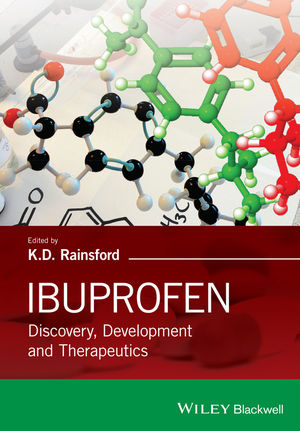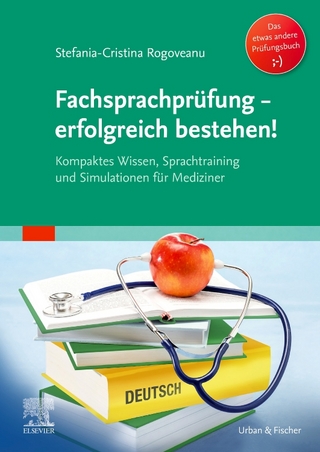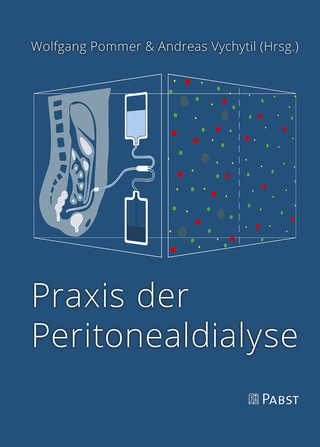
Ibuprofen
Wiley-Blackwell (Verlag)
978-1-118-74338-6 (ISBN)
- Titel z.Zt. nicht lieferbar
- Versandkostenfrei innerhalb Deutschlands
- Auch auf Rechnung
- Verfügbarkeit in der Filiale vor Ort prüfen
- Artikel merken
Edited by leading world expert with over 40 years record in research, teaching and as a scientific advisor in the field of anti-inflammatory/analgesic agents. Professor Kim Rainsford is also the founding Editor-in-Chief of the journal, Inflammopharmacology, as well as being an Associate Editor of The Journal of Pharmacy & Pharmacology.
Provides a thorough coverage of the medicinal chemistry and pharmaceutics of ibuprofen, and its pharmacokinetics in both humans and animals.
Includes molecular, pharmacological and toxicological studies, and discusses the safety and efficacy of non-prescription ibuprofen, including its side effects.
Ibuprofen: Discovery, Development & Therapeutics provides a definitive reference on all the main aspects of the chemical and pharmaceutical properties, mechanisms of action and therapeutic uses of ibuprofen including its role in the prevention and treatment of rheumatic conditions, cancer and neurodegenerative conditions such as Alzheimer’s and Parkinson’s diseases. The book has its origins in a volume first published in 1999, since when there have been considerable advances in research and clinical studies on ibuprofen in the treatment of many inflammatory and even non-inflammatory states. This book will prove invaluable to scientists, clinicians, pharmacists and all those who need to know about the actions and uses of anti-inflammatory and analgesic drugs.
Professor K.D Rainsford, Professor Emeritus of Biomedical Sciences, Sheffield Hallam University.
List of Contributors xiii
Preface xv
1 History and Development of Ibuprofen 1
Kim D. Rainsford
Summary 1
1.1 Introduction 1
1.2 Historical Background 5
1.3 Initial Stages 7
1.4 Compounds in Development 10
1.5 Ibufenac – Almost There, but for Liver Toxicity 12
1.6 More Setbacks 12
1.7 More Learning 12
1.8 Ibuprofen 12
1.8.1 First Clinical Trials 12
1.8.2 Gastrointestinal Safety 14
1.9 Achievements and Rewards at Last 15
1.10 Ultimate Recognition of Safety – OTC Status 17
1.11 Worldwide Developments 19
1.11.1 Evolving Applications of Ibuprofen 19
Acknowledgements 20
References 20
2 The Medicinal Chemistry of Ibuprofen 22
Kenneth J. Nichol and David W. Allen
2.1 Introduction 22
2.2 The Discovery of Ibuprofen 22
2.3 Synthetic Routes to Ibuprofen 27
2.4 Biological Activities of Ibuprofen Analogues 31
2.5 Metabolites of Ibuprofen 36
2.5.1 Metabolites and Enantiomer Inversion 36
2.5.2 Synthesis of Metabolites 37
2.6 Ibuprofen Enantiomers 38
2.7 Physicochemical Aspects 42
Acknowledgements 43
References 43
3 The Pharmaceutics of Ibuprofen 50
Fred Higton
Summary 50
3.1 Physical and Chemical Characteristics of Ibuprofen 50
3.2 Products Available Worldwide 54
3.3 Solid Dose Presentations 54
3.3.1 Conventional Ibuprofen Tablets 56
3.3.2 In vitro/in vivo Testing 58
3.3.3 Sustained Release Preparations 60
3.3.4 Ibuprofen Fast Acting: Ibuprofen Salts and Derivatives 64
3.4 Liquids 67
3.5 Taste-Masking of Ibuprofen 67
3.6 Suppositories 69
3.7 Topical Presentations 70
3.8 Conclusion 72
References 72
4 The Pharmacokinetics of Ibuprofen in Humans and Animals 81
Fakhreddin Jamali and Dion R. Brocks
Summary 81
4.1 Absorption 82
4.2 Distribution 83
4.2.1 Protein Binding 83
4.2.2 Tissue Distribution 88
4.3 Clearance 92
4.3.1 Metabolism of Ibuprofen 93
4.3.2 Excretion of Ibuprofen 104
4.4 Interspecies Differences in Pharmacokinetics of (R)- and (S)-Ibuprofen 105
4.5 Relationship between Effect and Plasma Concentrations 106
4.5.1 Therapeutic Effects 106
4.5.2 Toxic Effects 107
4.6 Pharmacokinetics in Special Populations 108
4.6.1 Pharmacokinetics and Analgesic Effects in Patients in Pain 108
4.6.2 Febrile Children and Infants 114
4.6.3 Postoperative Paediatric Patients 115
4.6.4 Premature Infants 115
4.6.5 Juvenile Arthritis 116
4.6.6 Children with Cystic Fibrosis 116
4.6.7 Elderly Adults 117
4.6.8 Rheumatic Disease 117
4.6.9 Renal Insufficiency 118
4.6.10 Hepatic Disease 119
4.6.11 Burn Patients 119
4.6.12 Effect of Gender and Race 119
4.6.13 Effect of Operational Stessors 120
4.7 Drug Interactions 120
4.7.1 Anti-ulcer Medications 120
4.7.2 Zidovudine 121
4.7.3 Codeine and Oxycodone 121
4.7.4 Anti-hyperlipidemic Drugs 121
4.7.5 Oral Contraceptive Steroids 122
4.7.6 Self-interaction; Enantiomer–Enantiomer Interaction 123
4.7.7 Effect of Ibuprofen on the Pharmacokinetics of Other Drugs 123
4.7.8 Other Drugs 123
References 124
5 Pharmacology and Toxicology of Ibuprofen 132
Kim D. Rainsford
Summary 132
5.1 Introduction 133
5.2 Basic Pharmacology and Toxicology 134
5.2.1 The Relevance of Data from Animal Models to the Clinical Situation in Humans 134
5.2.2 Acute Anti-inflammatory Activity 136
5.2.3 Chronic Anti-inflammatory Activity 141
5.2.4 Analgesic Activity 143
5.2.5 Antipyretic Activity 149
5.2.6 General Toxicology 149
5.2.7 Effects on Prostaglandin Production Related to Pharmacological Activities 164
5.2.8 Effects on Leukotriene Production 180
5.2.9 Smooth Muscle Contractility 181
5.2.10 Effects on Nitric Oxide Production 181
5.2.11 Leucocytes and Vascular Permeability 182
5.2.12 Leukocyte Functions 188
5.2.13 Immune Functions 191
5.2.14 Effects on Articular Joint Integrity 192
5.2.15 Miscellaneous Biochemical and Cellular Actions 194
5.3 Experimental Therapeutics 196
5.3.1 Endotoxin Shock 196
5.3.2 Acute Lung Injury Induced by Exposure to Chemicals 198
5.3.3 Acute Myocardial Injury and Coronary Functions 199
5.3.4 Cerebral Injury 201
5.3.5 Tourniquet Shock Ischemia 202
5.3.6 Transcutaneous Hypoxia 202
5.3.7 Cytokines and Surgical Stress 203
5.3.8 Pleurisy from Delayed Hypersensitivity Reaction 203
5.3.9 Abdominal Adhesions 203
5.3.10 Uveitis 204
5.4 Clinical Pharmacology and Toxicology 204
5.4.1 Experimental Inflammation 204
5.4.2 Experimental Pain 205
5.4.3 Effects on Platelet Aggregation and Thrombosis 206
5.4.4 Gastrointestinal Injury and Bleeding 208
5.4.5 Hypersensitivity and Other Immunological Reactions 210
5.4.6 Gynaecological and Obstetric Uses 211
5.4.7 Effects on Lung Inflammation in Cystic Fibrosis 212
5.4.8 Malignant Conditions 212
5.4.9 Prevention of Cataract 213
5.5 Conclusions 214
References 214
6 Therapeutics of Ibuprofen in Rheumatic and Other Chronic and Painful Diseases 237
Walter F. Kean, Kim D. Rainsford and the late William W. Buchanan
Summary 237
6.1 Introduction 238
6.2 Overview of Clinical Pharmacology 239
6.2.1 Pharmacokinetics Relevant to Therapy of Inflammatory Diseases and Pain 240
6.2.2 Anti-inflammatory and Analgesic Activities 245
6.2.3 Criteria for Determining Therapeutic Responses 247
6.3 NSAID-Related Adverse Drug Reactions and Toxicity 248
6.3.1 Gastrointestinal Side-Effects 248
6.3.2 Cardiovascular Reactions 251
6.3.3 Hepatic Reactions 251
6.3.4 Renal Adverse Reactions 251
6.3.5 Miscellaneous Reactions 253
6.4 Rheumatoid Arthritis 254
6.4.1 Early Studies at Low Doses 255
6.4.2 Later Higher]Dose Studies 257
6.5 Juvenile Idiopathic (Rheumatoid) Arthritis 261
6.6 Primary and Secondary Osteoarthritis 262
6.6.1 Acceleration of Cartilage and Bone Destruction 272
6.6.2 Therapeutic Aspects 273
6.6.3 Comparisons with Coxibs 274
6.7 Formulations 276
6.8 Variability in Response 276
6.9 Relation of Drug Kinetics to Clinical Response 277
6.10 Low Back Pain 278
6.11 Shoulder Pain 279
6.12 Reactive Arthritis (Reiter’s Syndrome) 280
6.13 Psoriatic Arthritis 280
6.14 Ankylosing Spondylitis 280
6.15 Gout 280
6.16 Fibromyalgia 281
6.17 Haemophiliac Arthritis 281
6.18 Postoperative Pain 281
6.19 Sports Injuries 282
6.20 Other Painful States 283
6.21 Cancer 284
6.22 Potential Non]analgesic Usage 285
6.23 The Elderly 285
6.24 Dexibuprofen 286
6.25 Conclusions 286
References 287
7 Safety and Efficacy of Non-prescription, Over-the]Counter (OTC) Ibuprofen 313
Kim D. Rainsford
Summary 313
7.1 Introduction 313
7.2 Analysis of Clinical Trials 315
7.2.1 Studies in Prospective Clinical Trials 317
7.3 Epidemiological Studies and Case Reports 327
7.4 Considerations for Special Groups 330
7.4.1 Use of Drugs in the Elderly 330
7.4.2 Safety in Pregnancy and Lactation 331
7.4.3 Uses and Safety in Sport and Exercise 334
7.5 Conclusions 336
References 336
8 Use of Ibuprofen in Dentistry 346
Raymond A. Dionne, Sharon M. Gordon and Stephen A. Cooper
Summary 346
8.1 Introduction 346
8.2 Analgesia 347
8.2.1 Preventive Analgesia 348
8.2.2 Analgesic Activity of Ibuprofen Isomers 349
8.2.3 Ibuprofen-Containing Combinations 350
8.2.4 Ibuprofen Formulations 354
8.3 Effects on Oedema 355
8.4 Interactions with Plasma β-Endorphin 356
8.5 Use for Chronic Temporomandibular Pain 356
8.6 Recommendations for the Use of Ibuprofen in Dentistry 358
References 359
9 Gastrointestinal Adverse Reactions from Ibuprofen 363
Kim D. Rainsford and Ingvar Bjarnason
Summary 363
9.1 Background and Introduction 364
9.2 Current Status Concerning NSAID Ulceration 365
9.2.1 Morbidity and Mortality 366
9.3 Occurrence of Ulcers and Complications 369
9.3.1 Epidemiological Studies 369
9.3.2 Large-Scale Mega Trials 376
9.4 Clinical Investigations on Comparative GI Effects of Ibuprofen 378
9.4.1 Early Symptom-Based Studies in GI]Intolerant Subjects 378
9.4.2 Procedures for Assessing GI Injury 379
9.4.3 Upper GI Endoscopy 380
9.4.4 NSAID-Enteropathy: Capsule and Device Assisted Intestinal Endoscopy and Other Techniques 381
9.4.5 Radiochromium [51Cr]-Labelled Red Cell GI Blood Loss 389
9.4.6 Intragastric and Occult Blood Loss and Reduced Haemoglobin 394
9.5 Clinically-Relevant Pathogenesis of NSAID-Associated GI Injury 395
9.5.1 Factors Affecting NSAID-Induced Gastroduodenal Injury 395
9.5.2 Influence of Gastric Acidity 397
9.5.3 Physicochemical Associations, Topical versus Systemic Actions of NSAIDs, Cyclo]oxygenases and Reduced Prostanoids 399
9.5.4 Effects of NSAIDs on Gastric pH and Acid Secretion 402
9.6 Procedures for Reducing GI Symptoms 404
9.6.1 Ibuprofen Formulations 404
9.6.2 Effects of Food or Drinks 406
9.6.3 Mucus Protection Strategies 409
9.6.4 Anti-ulcer Agents 410
9.7 Overall Assessment of GI Safety of Ibuprofen 412
References 412
10 Hepatorenal Effects of Ibuprofen Compared with other NSAIDs and Paracetamol 432
Kim D. Rainsford
10.1 Introduction 432
10.2 Hepatorenal Syndromes 433
10.3 NSAID, Analgesic and DMARD-Induced Liver Injury 433
10.3.1 Historical Associations of NSAIDs with Liver Toxicity 433
10.3.2 Awareness of Liver Reactions with Modern NSAIDs 434
10.3.3 Simultaneous Use of Potentially Hepatotoxic Medications 439
10.4 Renal Adverse Reactions Form NSAIDs and Analgesics 442
10.4.1 Renal Adverse Reactions from Ibuprofen 444
10.5 Conclusions 446
References 446
11 Adverse Drug Reactions Attributed to Ibuprofen: Effects Other Than Gastrointestinal 452
L.J. Miwa, M. Manenos and Judith K. Jones
11.1 Introduction 452
11.2 Allergy and Hypersensitivity 453
11.2.1 Points to Consider when Evaluating Allergy-Type Reactions to NSAIDs 453
11.2.2 Epidemiology of Allergy or Hypersensitivity with NSAIDs 454
11.3 Adverse Dermatological Effects 457
11.4 Hepatotoxicity 458
11.5 Haematological Adverse Effects 465
11.5.1 Neutropenia, agranulocytosis and aplastic anaemia 465
11.5.2 Other Blood Disorders 466
11.6 Renal Adverse Effects 466
11.7 Cardiovascular Adverse Effects 470
11.8 Adverse Effects on Reproduction 477
11.8.1 Animal Studies of Teratogenic and Reproductive Effects 477
11.8.2 Reports of Teratogenic Effects in Humans 478
11.8.3 Perinatal Adverse Effects Associated with Therapeutic Use 479
11.8.4 Other Reproductive Effects 480
11.9 Endocrine and Metabolic Adverse Effects 480
11.10 Central Nervous System Effects 480
11.10.1 General CNS Effects 480
11.10.2 Aseptic Meningitis 481
11.10.3 Cognitive Dysfunction 481
11.10.4 Psychiatric Adverse Effects 481
11.11 Ocular Adverse Effects 481
11.12 Infection-Related Adverse Event 482
11.13 Drug Interactions 482
11.13.1 NSAID–Anti-hypertensive Interactions 483
11.13.2 NSAID–Diuretic Interactions 484
11.13.3 NSAID–β-Adrenergic Blocker Interactions 484
11.13.4 NSAID–Angiotensin-Converting Enzyme Inhibitor Interactions 484
11.13.5 NSAID–Oral Anti-coagulant Interactions 484
11.13.6 NSAID–Aminoglycoside Interactions 485
11.13.7 NSAID–Oral Hypoglycemic Interactions 485
11.13.8 NSAID–Cyclosporin Interactions 485
11.13.9 NSAID–Lithium Interactions 485
11.13.10 NSAID–Methotrexate Interactions 485
11.13.11 Ibuprofen–Aspirin Interactions 486
11.14 Future Needs 486
References 487
12 Human Toxicity of Ibuprofen 500
Glyn Volans
Summary 500
12.1 Introduction 500
12.2 Mechanism of Toxicity in Overdosage 501
12.3 Epidemiological Reviews of the Effects of Ibuprofen in Overdosage 501
12.4 Reports of Deaths after Ibuprofen Overdose 502
12.5 Dose–Response and Toxicokinetics 502
12.6 Gastrointestinal Effects 508
12.7 Renal Effects 509
12.7.1 Cases of Massive Overdose 509
12.7.2 Cases Affected by Additional Factors 509
12.8 Metabolic Effects 510
12.9 Central Nervous System (CNS) Effects 511
12.10 Cardiovascular Effects 511
12.11 Respiratory Effects 512
12.12 Haematological Effects 512
12.13 Skin Reactions 512
12.14 Ibuprofen Toxicity in Children 512
12.15 Ibuprofen in Pregnancy and Breast Feeding 513
12.16 Chronic Abuse of Ibuprofen 513
12.17 Conclusion 514
12.17.1 Management of Ibuprofen Overdosage 514
12.17.2 Continuing Surveillance 515
12.17.3 Comparative Human Toxicity – Ibuprofen versus Other NSAIDs and Non]opioid Analgesics 516
References 516
13 Ibuprofen in the Prevention and Therapy of Cancer 520
Randall E. Harris
Summary 520
13.1 Introduction and Background 521
13.2 Ibuprofen, COX-1 and COX-2 522
13.3 COX-2 and the Inflammogenesis of Cancer 522
13.4 Preclinical Efficacy Studies of Ibuprofen and Cancer 523
13.4.1 Preclinical Efficacy Study of Ibuprofen Therapy for Breast Cancer 523
13.4.2 Preclinical Efficacy Study of Ibuprofen versus Retinoic Acid for the Prevention of Breast Cancer 523
13.4.3 Preclinical Efficacy Study of Celecoxib versus Ibuprofen for the Prevention of Breast Cancer 524
13.4.4 Other Animal Studies of NSAIDs and Cancer 524
13.5 Human Epidemiologic Studies of Ibuprofen for the Prevention of Cancers of the Breast, Colon, Prostate and Lung 525
13.5.1 Methods of Analysis 526
13.5.2 Comparative Results for Ibuprofen and Aspirin from Eepidemiologic Studies of Cancers of the Breast, Colon, Prostate and Lung 526
13.5.3 Comparison of Ibuprofen, Aspirin and Selective COX]2 Inhibitors in Cancer Prevention 527
13.5.4 Meta-analyses of Epidemiologic Studies of NSAIDs for Cancer Prevention 528
13.5.5 Discussion of Meta-analyses of NSAIDs and Cancer 530
13.6 Therapeutic Studies of Non-selective COX-2 Inhibitors for Human Cancer 531
13.7 COX-2 and the Inflammogenesis of Cancer 533
13.7.1 COX-2 Blockade of Molecular Carcinogenesis 533
13.7.2 Role of COX-1 in Carcinogenesis 534
13.7.3 Other Molecular Targets of NSAIDs 535
13.8 Safety Profile of Ibuprofen 535
13.8.1 COX-1 and COX-2 Isoforms 535
13.8.2 Gastrointestinal and Renal Effects of Ibuprofen 535
13.8.3 Ibuprofen and Cardiovascular Disease 536
13.9 Future Perspectives for Cyclooxygenase Inhibitors in Cancer Chemoprevention 536
References 537
14 Ibuprofen in Prevention of Neurodegenerative Diseases 549
Kim D. Rainsford
Summary 549
14.1 Introduction 550
14.2 Pathogenesis of AD 550
14.3 Early Clinical Observations of Effects of NSAIDs in AD 551
14.4 Cellular and Molecular Effects of Ibuprofen in AD 555
14.4.1 Actions of Ibuprofen in Rodent AD Models 556
14.4.2 In Vitro Effects and Molecular Actions of Ibuprofen in AD 558
14.4.3 Conclusions 559
14.5 Ibuprofen in Parkinson’s Disease 559
14.5.1 Effects of Ibuprofen in Models of PD 561
14.6 Other Neuroprotective Effects of Ibuprofen 561
14.7 Conclusions 562
References 562
Appendix A Some Proprietary Brands and Preparations of Ibuprofen Available Worldwide 573
Kim D. Rainsford
Appendix B References to Analytical Methods for Determination ofIbuprofen in Biological Fluids, Principally Plasma 583
Kim D. Rainsford
Index 000
| Erscheint lt. Verlag | 8.9.2015 |
|---|---|
| Verlagsort | Hoboken |
| Sprache | englisch |
| Maße | 178 x 252 mm |
| Gewicht | 1080 g |
| Themenwelt | Medizin / Pharmazie ► Medizinische Fachgebiete |
| Naturwissenschaften ► Biologie | |
| Naturwissenschaften ► Chemie | |
| Technik | |
| ISBN-10 | 1-118-74338-5 / 1118743385 |
| ISBN-13 | 978-1-118-74338-6 / 9781118743386 |
| Zustand | Neuware |
| Haben Sie eine Frage zum Produkt? |
aus dem Bereich


